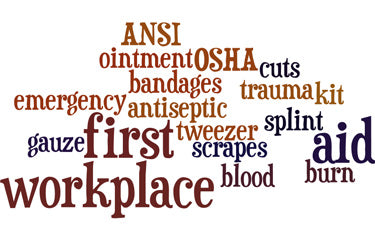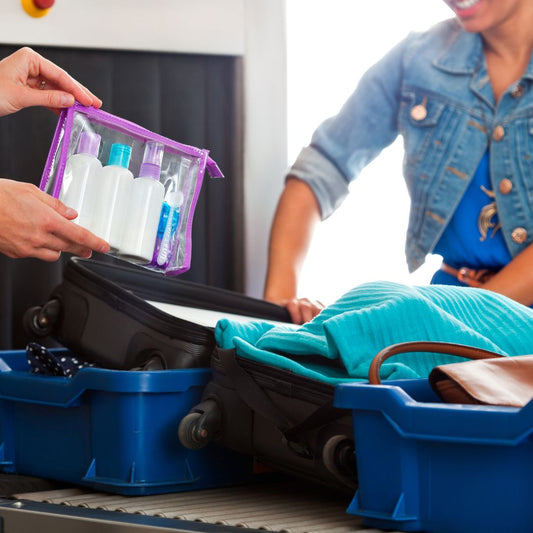5 First Aid Safety Tips for Any Restaurant Kitchen

Any manager in the food service industry knows how quickly a busy night can put you in the weeds. A hectic kitchen can not only stress out your staff but also the increased work pace can lead to in-the-moment injuries such as cuts, burns, and falls. However, even on slow lunch shifts and quiet Tuesday nights, accidents are bound to happen. Whether your workers are prepping food or tackling a heap of dirty dishes, it's important that they feel safe while they perform work functions. Of course, having a first aid kit approved by the Occupational Safety and Health Administration is the top priority, but here are five additional tips for making safety a priority in your restaurant kitchen:
1. Make sure first aid supplies are readily available
A kitchen first aid kit only serves its purpose if it's readily available to your workers. Avoid leaving first aid supplies in a locked office or other location that requires finding a manager for access. Make sure new workers are oriented with the location of first aid kits throughout the restaurant as well. Furthermore, make a point of inspecting your first aid kit regularly and replacing out-of-date items.
2. Know the difference between state and federal requirements
Adhering to federal safety regulations is a must, but depending on what state you're in, there may be more expected of your business. When stocking and replenishing your first aid kit, ensure that you have the proper materials to meet both sets of standards. The Food & Drug Administration(FDA) requires employees to use single-use gloves over an impermeable bandage, finger cot, or finger stall.
3. Emphasize food safety
Food safety should be a top priority in any kitchen. This, of course, relies foremost on your employees following proper sanitation procedures, but also on ensuring your workers can adequately dress and cover cuts and other wounds when they're in the middle of a shift. For example, if one of your line cooks cuts him- or herself on a knife, he or she will need bandages, finger tape, and gloves to prevent the injury from coming in contact with any food or preparation surface. Food-safe, blue, metal-detectable bandages should always be used in a restaurant kitchen. Their blue color can easily be seen if they fall off. Many commercial food automation facilities use metal detectors so it makes sense to use "food-safe metal detectable bandages".
"Many common injuries in a restaurant kitchen are entirely preventable."
4. Minimize hazards
Many common injuries in a restaurant kitchen are entirely preventable. Cuts are often due to knives not being properly sharpened, burns may be caused by hands moving too quickly and slips occur because floor mats are old and have lost their traction. To mitigate these risks, create a comprehensive list of tasks for your workers to ensure your kitchen and front-of-house stay free of unnecessary risks.
5. Make note of what's in high demand
If your kitchen seems to be running through a box of burn gel packets each week, there may be a larger underlying issue. Address common injuries at the root source, and also keep track of how fast you're using items so that you can order more before running out. After all, no one wants to be in a position where a worker is injured and there aren't adequate supplies to take care of the situation.
MFASCO Health & Safety First Aid Tips & Resources for Restaurants:
An extra few minutes waiting for food can separate a great dining experience and a bad one. With the fast pace, hot surfaces, sharp blades, and wet floors common to kitchens, injuries are inevitable. Every minute it takes to get an injured team member cleaned up and back to their station is a minute of longer wait times for your guests. It doesn’t take much to keep the right safety supplies stocked, and in doing so you prioritize your team’s safety while keeping your guests happy. Consider these resources to help your kitchen:
Kitchen Sanitation Products & Accessories:
Restaurant First Aid Kits
OSHA Compliant First Aid Kits
Make a Custom First Aid Kit
Burn Treatment Supplies
Additional Resources for Kitchen Sanitation:
How to Inspect Your First Aid Kit Expiration Dates
Taking Ownership of Your First Aid Replenishment Program
7 Things You Should Do When You Get A Cut
First Aid for Hand Injuries
Contributing Expert

Mike Brinker
Mike Brinker has been working in the first aid industry for over 35 years. He has worked with thousands of businesses,groups, and organizations to provide a healthy and safe work environment. Mike helped create “Make-A-Kit”, the internet's only online first aid kit creation tool. He has also authored many helpful first-aid and safety-related resource articles found at the MFASCO Learning Center.























